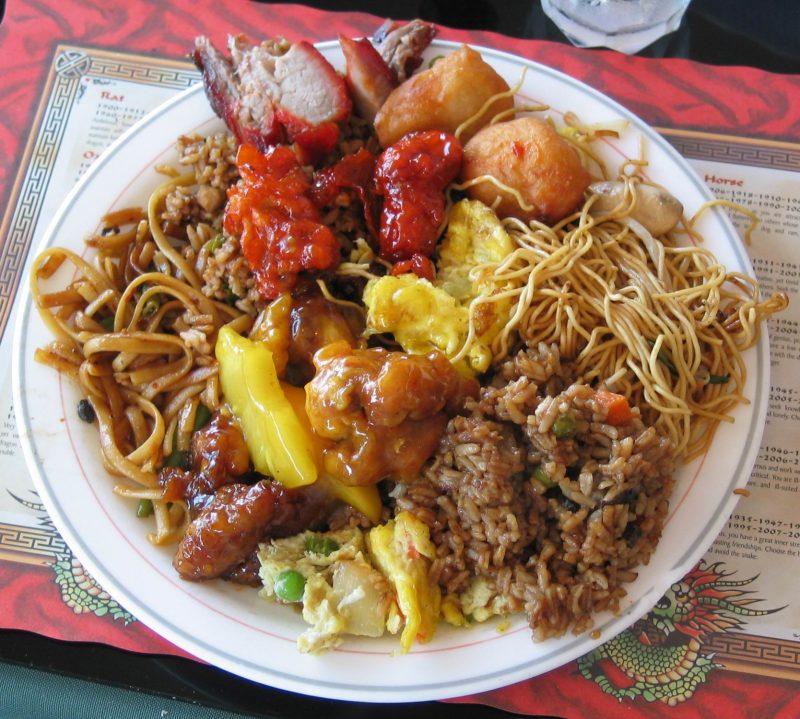The Irresistible Characteristics Of Chinese Food

The Irresistible Characteristics Of Chinese Food
Start a culinary trip of the fascinating flavors, textures, and smells of Chinese food. Whether wandering through the streets of Beijing or sitting in a picturesque tea house in Hangzhou, Chinese cuisine reveals a wonderful variety of regional styles and culinary traditions, makes it different and thqt is why people around the globe enjoy it very much. The rich culinary heritage of China entices both the professional foodie and the beginner.
Diversity of flavours
Chinese cooking has a specialty that distinguishes it from others, comprising of varied tastes that could be sweet and savory, or spicy and sour. Chinese chefs delicately mix these flavors using soy sauce, vinegar, ginger, garlic, and a variety of aromatic spices. With Chinese food, you can enjoy the umami-rich broth of a Sichuan hotpot or immers yourself in the delicate sweet meal of Cantonese dim sum. But the tastes are endless. Chinese food uplifts your mood to leave an impression. Each of these dishes offers a symphony of flavors that delight the palate.
Regional varieties
China is a huge and diverse country that is represented in its cuisine which is reflected in its wide range of regional cuisines. From the spicy dishes of Sichuan to the refined flavors of Jiangsu, each province has its distinctive culinary culture and specialties. Cantonese cuisine, well-known for its fresh ingredients and mild flavors, is famous for its seafood dishes and dim sum delicacies. Contrastingly, the bold and spicy flavors of Sichuan cuisine, which are derived from massively using chili peppers and Sichuan peppercorns, give a real sensual experience for the adventurous food lovers. The exploration of the regional varieties of Chinese cuisine is a journey of discovery from the longing for the heartiness of the Northern China noodles or the delicacy of the Yangtze River Delta dumplings. They always manage to impress.
Harmony and balance
At the heart of Chinese cuisine lies the belief that the beauty of taste lies within the balance and harmony of flavors and textures. Traditional Chinese food strive to achieve a harmonious balance between the five key elements: sugar, acid, saltiness, bitterness, and savory. This harmony is achieved by the choice of ingredients and the method of cooking them. There are many kinds of cookery in Chinese culture using using vegetables and meats, namely stir-frying, steaming, braising, simmering, etc., which allow the ingredients to keep their natural tastes and textures intact and even enhance their nutritional properties. You will definitely get addicted to the clean crispness of the stir-fried vegetables or the softness of the slow-cooked meats. This is the secret behind the composition and magnificent harmony of Chinese dishes.
Dim Sum culture
It is simply impossible to analyze Chinese cuisines without considering the long history of dim sum. Dim sum is a culinary item that originated in the tea houses of Cantonese-speaking regions. Many people take it to be a synonym for a relaxing weekend brunch as well as social gatherings. Dim Sum is a wide-spectrum food that covers small portions of various items, like dumplings, buns, rolls, and pastries, and they are usually served in steam baskets or on small plates. The dim sums, with the har gow and char siu bao being popular examples, are a treat for anyone who seeks a variety of tastes and textures. This delicacy of food represents the intermingling of community and the gregariousness of Chinese food. Hence it is a perfect dish for a family and friends event.
Noodle mastery
Noodles are one of the most popular dishes in China and are prepared in so many styles, such as flat, long, deep-fried or mixed with sauces. One of the unique aspects of the Chinese noodle world is that it can range from thin hand-cut egg noodles to heavy, dense, noodles that are hand pulled. These two kinds of noodles can both be used to increase the flavor profile of a dish. Regardless if you boil, sauté or put them in soups, noodles, whether those are thick and chewy or thin and smooth, are an addicted food that makes Chinese food lovers fall in love with them at the first sight. Thus, exploring the whole world of Chinese noodles is a culinary adventure that you will never regret.
The art value of tea
Tea in Chinese culture is a highly prized beverage. It is as a custom closely connected with other culinary elements of the country. Tea houses in China create peaceful retreats from the busyness of modern life, where one can commune with themselves and converse with others amid sound silence. Chinese tea is ever so beautiful and diverse as tea varieties range from floral ones like the green or oolong teas to the delicate world of white teas. A cup of tea can be the perfect companion to the meal or can be enjoyed as a standalone refreshing drink.
Amazing culinary wonder
Chinese cuisine is an amazing culinary wonder which would take any foodie to new levels. It describes feelings of colors and touch with more than 4,000 years of traditions. Varying from the fiery and spicy dishes of Sichuan to the delicate and delicate flavors of dim sum from Cantonese region, Chinese culinary from different regions has each its unique culinary heritage and specials. To be fully immersed into traditional culinary experience, you have a story behind every dish that are centuries-old where they are borrowed from different cultural influences. Load your chopsticks and get ready to start a fascinating trip in the amazing world of the Chinese food.



